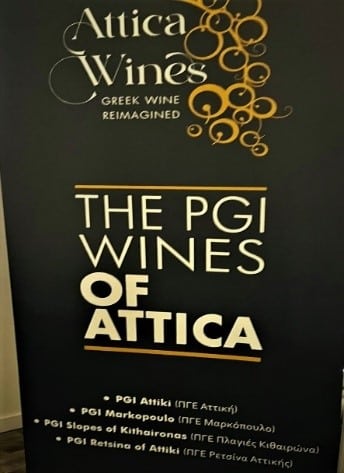Introduction: Discovering Greek Wines – A Palate Adventure
In this 4-part series, “Greek Wines. Small-Scale + Large Impact,” we look at why Greek wines should be on your radar.
Indigenous Grape Varieties: Greece boasts over 300 indigenous grapes, each with its own distinct flavors and characteristics. This impressive diversity allows wine lovers to explore a wide range of grape expressions that showcase Greece’s rich viticultural heritage. From the crisp and mineral-driven Assyrtiko to the aromatic and floral Moschofilero, there is a Greek wine to suit every palate. Exploring these indigenous varieties is like embarking on a voyage through Greece’s terroir and culture.
Distinctive Terroir: Greece’s diverse climate, abundant sunshine, and unique soil composition contribute to the exceptional quality of its wines. The sunny and dry climate allows grapes to fully ripen, resulting in concentrated flavors and vibrant acidity. The thin and poor soil, often found in mountainous regions, forces the vines to struggle, producing lower yields but grapes of exceptional quality. This combination of factors creates wines with complexity, depth, and a strong sense of place.
Captivating White Wines: Greek white wines have gained international recognition for their outstanding quality and distinct character. Assyrtiko, primarily grown in Santorini, produces bone-dry wines with high acidity, pronounced minerality, and refreshing citrus flavors. Malagousia and Moschofilero offer aromatic profiles with floral notes and hints of exotic fruits. These white wines are versatile and pair well with various cuisines, making them a delightful addition to any wine collection.
Expressive Red Wines: Greek red wines, particularly Xinomavro and Agiorgitiko, have also garnered attention for their depth and complexity. Xinomavro, often compared to Italy’s Nebbiolo, produces age-worthy reds with firm tannins, vibrant acidity, and flavors of dark fruits, spices, and earth. Agiorgitiko, known as the “Blood of Hercules” delivers elegant and medium-bodied wines with red fruit flavors and silky tannins. These red wines offer a unique twist on classic grape varieties and provide a compelling experience for wine enthusiasts.
Food-Friendly Styles: Greek wines are known for their food-friendliness and their ability to beautifully complement the country’s cuisine. With its emphasis on fresh ingredients, aromatic herbs, and vibrant flavors, Greek cuisine pairs exceptionally well with Greek wines. Whether you’re enjoying a seafood feast with a crisp Assyrtiko, pairing a lamb dish with a bold Xinomavro, or savoring Greek meze with a versatile Agiorgitiko, Greek wines elevate the dining experience and create harmonious pairings.

Attica Wine Region: Sophisticated and Classic
Wine production in Greece has a rich history and is deeply ingrained in the country’s culture. The diverse range of wine regions and terroirs contribute to the wide array of flavors and styles found in Greek wines. The four main wine regions in Greece, include Northern Greece, Central Greece, Southern Greece, and the Aegean Islands, and each has its own unique characteristics and microclimates. These regions encompass various soil types, grape varieties, and geographical influences, which all influence the wines produced.
In terms of terroirs, Greece can be classified into four distinct categories: mountainous and semi-mountainous, continental, volcanic, and coastal. Each terroir has its own impact on grape growing and wine production. The mountainous and semi-mountainous regions benefit from cooler temperatures and higher altitudes, leading to wines with vibrant acidity. The continental regions experience greater temperature variations, while the volcanic soils contribute to wines with mineral and earthy characteristics. The coastal regions, influenced by their proximity to the sea, often produce wines with a distinct maritime influence.
Attica features strongly in Greek mythology surrounding wine. The myth of Icarius serves as a cautionary tale about the dangers of excess and the consequences that can arise from unfamiliarity with certain customs or substances. It also highlights the connection between the region of Attica and the ancient tradition of winemaking, as Dionysus chose this area to impart his knowledge and initiate the cultivation of grapes and wine production.
Attica is a district in Central Greece, located north of the Peloponnese peninsula and home to Athens. The area includes nearly 4000 square kilometers of land, with varied topography and features a hot, dry Mediterranean climate (mild winters, ample sunshine, cooling influences such as the strong, dry north winds of the Aegean Sea), ideal for the cultivation of grapes, and renowned for its Retsina production.
Attica is the largest wine region in Greece with many wineries accessible within a 30-minute drive from Athen’s center. In Attica, there are no specific geographical appellations designated for wines. Retsina wines are classified as “Appellation by Tradition,” in Greek wine law. Traditional viticultural practices, such as bush training and fermentation in oak and amphorae are combined with modern technology and expertise to ensure quality.
Attica encompasses approximately 6,500 hectares of vineyards, where both indigenous and selected foreign grape varieties are grown. Savvatiano and Roditis are the dominant white grape varieties in the region, accounting for about 80% of the vineyard area. Savvatiano is especially notable for its role in producing Retsina, while Roditis is used for making kokkineli, a rosé wine.
Retsina is uniquely flavored with pine resin during the winemaking process. Fortunately, the evolving wine industry in Attica acknowledges changes in consumer wine preferences and have adjusted the Retsina palate experience by introducing grape varieties like Roditis and Assyrtico to produce Retsina wines with lower levels of resin, delivering a more subtle and contemporary expression of the style.
Attica also cultivates international grape varieties, including Cabernet Sauvignon and Chardonnay. These grapes are grown in the mountainous northern part of the region where higher altitudes offer a cooler climate which helps these varieties develop their full potential and produce wines with well-balanced flavors and acidity.
Although white grape varieties prevail in Attica, notable red grape varieties such as Mandilaria and Agiorgitiko are cultivated in the region. These red varieties thrive in Attica’s fertile soil and are used to produce some of Greece’s finest red wines.
Overall, the wine production in Attica, Greece, exemplifies the country’s rich wine culture, diverse grape varieties, and commitment to producing high-quality wines through a harmonious balance of tradition and innovation.
Wine Notes
1. Fragou. Savvatiano 2022. PCI. Attica. Vineyard of Spata, Voulia (single vineyard). Pre-fermentation maceration (cold soak) in a controlled environment at low temperatures. Acreage yield is limited in order to get the best quality grapes from the vineyard of 21 acres in Pikermi.
About the Grape. Savvatiano
Savvatiano is a white Greek grape with a rich history, traditionally used as a base grape for Retsina wine. It possesses high drought tolerance, making it an ideal choice for cultivation in various regions of Greece, particularly in Attica. It is admired for its versatility, which allows for the production of both refreshing and aromatic wines.
About Fragou
Fragou is a delightful wine with vibrant and refreshing characteristics. Its appearance, with hints of pale yellow and sunlit green, suggests a visually appealing experience. The aroma profile, including fresh green grass, wet rocks, and citrus, presents a combination of natural and citrusy scents.
Moving on to the taste, Fragou offers a range of flavors. The presence of green and golden apples, pears, herbs, sea salt, fresh almonds, and jasmine creates a diverse and complex palate. The minerality adds a crispness to the wine, while the white flowers contribute to its aromatic quality. A slight undertone of retsina provides a subtle hint of resin, which is a characteristic of some Greek wines.
Balanced acidity contributes to its overall freshness. Serve Fragou chilled to enhance its refreshing qualities and makes it an excellent choice for summer. Suggested food pairings include cold poached salmon or shrimp.
Overall, Fragou is a versatile and enjoyable wine, offering a combination of fruity, herbal, and mineral notes that make it a pleasant choice for warm weather and seafood-focused meals.
Wine Notes
2. GWC/Kourtaki. Retsina Attica NV. Savvatiano.
Greek Wine Cellars, formerly known as Kourtaki Wines, is a prominent Greek wine producer with a rich history. The company was originally established in 1895 by Vassilis Kourtakis, who was among the first Greeks to pursue formal studies in oenology. Vassilis Kourtakis laid the foundation for the business, setting the stage for future generations.
Upon Vassilis’ retirement, the company was taken over by Dimitris Kourtakis, who further expanded the family’s winemaking legacy. Dimitris, having studied oenology in Dijon, France, brought new ideas and expertise to the company. During his tenure, Dimitris introduced a line of wines called Kourtaki Retsina, which gained popularity during the 1960s and 1970s.
With the retirement of Dimitris Kourtakis, his son Vassilis assumed leadership of the company. Vassilis recognized the declining popularity of retsina and decided to diversify the business beyond this specific wine style and in the early 1990s changed the name to Greek Wine Cellars. This move allowed the company to adapt to changing consumer preferences and expand its product range.
About The Grape. Savvatiano
In the case of Retsina, the wine undergoes a traditional winemaking process where small pieces of resin from the Aleppo pine tree are added to the fermenting wine. This practice dates back to ancient times when the resin was used as a sealant for wine vessels. Over time, the resin’s flavors and aromas became a characteristic feature of Retsina.
About GWC The Wine
Produces on the northeast-facing slope of Mt. Parnes in Attica. A lemon-yellow hue attracts the eye. The un-oaked dry white wine has a slightly tangy flavor with the traditional characteristic hint of pine resin thanks to the addition of a few pieces of pine resin to the must during fermentation. Look for hints of crushed thyme, pine resin, nectarine, and lemon on the nose and herbs and citrus on the palate. There is a delightful clear crisp finish. Pair with white meat and grilled fish and Greek salads.
© Dr. Elinor Garely. This copyright article, including photos, may not be reproduced without written permission from the author.
Read Part 1 here: Wine! Greek For Me
Read Part 2 here: Economics of Greek Wine Industry
(eTN): Attica Wine Region: Sophisticated and Classic | re-post license | post content























